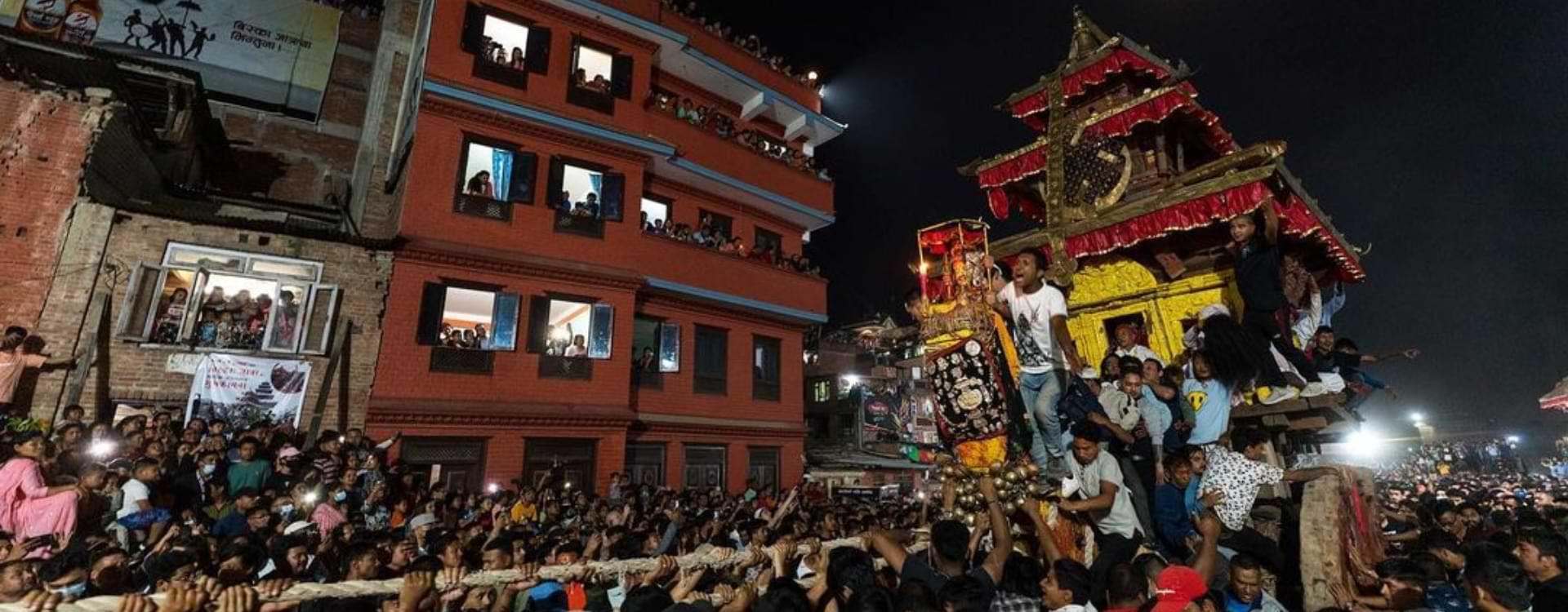
The Nepali New Year, also known as ‘’Naya Varsha’’ in Nepal, is a crucial cultural celebration worldwide. Owing to the Nepali calendar, the New Year's festival begins on the first day of Baisakh, which usually falls in mid-April. The festival is celebrated with new beginnings, family get-togethers, and cultural celebrations.
The date of the Nepali New Year can vary from year to year in the Gregorian calendar since the Nepali calendar is a lunar calendar based on old Hindu customs. More specifically, the Kathmandu Valley and other large cities celebrate the holiday with a lot of enthusiasm and happiness.
People of all ages enjoy participating in parades, dances, and musical performances as the streets are decorated with colorful banners, flags, and lights.
The history of the Nepali New Year dates back to the ancient Malla Kings of Nepal. According to the legends, the Malla Kings of Kathmandu were great warriors and had conquered many small kingdoms in the surrounding regions. The Newar people of the Kathmandu Valley had a lunar calendar, which was difficult to keep track of and often caused confusion.
In order to address this issue, King Siddhi Narasimha Malla created the Nepali calendar, which is still in use today as a solution to this problem. On October 20, 879 AD, the Nepal Sambat, a new calendar, was launched. The Nepali calendar year officially begins on this day, also called Nepal Sambat New Year Day. New Year's celebrations in Nepal Nepal celebrate the Nepali New Year as a major occasion with great zeal and enthusiasm. Cleaning and decorating the house with flowers, garlands, and vibrant rangolis are the first tasks of the day. In addition, many make delectable traditional foods and treats to share with friends and family.
Traditional Customs and Rituals
Nepali New Year is celebrated with various traditional customs and rituals, which differ from region to region. Some of the common customs are:
Read this: 7 best treks to do in Nepal during the Nepali new year
The Bisket Festival (Bisket Jatra) is one of the most popular festivals in Nepal. Nepalese people celebrated Bisket Jatra on the day of the Nepali New Year (the mid-week of April). The people of Bhaktapur come together to celebrate the festival at the beginning of a new year with ancient rituals and traditions.
History and Origin of Bisket Jatra
Bisket Jatra has a rich history and dates back to the Licchavi era, which ruled Nepal from the third to the ninth century. According to legend (a prince of Bhaktapur), was on a hunting expedition and discovered a serpent in the forest. The serpent transformed into a girl and revealed that she was a goddess. She also instructed the prince to build a temple in her honor. Since then, the temple of the goddess has been worshipped during the festival.
Bisket Jatra is a four-day festival that is celebrated with great enthusiasm and zeal.
Nepali New Year is celebrated on the first day of Baishakh (which usually falls in mid-April).
Nepal Sambat was introduced by a medieval merchant and warrior, Shankhadhar Sakhwa, to commemorate the Tibetan king's release of his fellow Newar merchants from Tibet in the 9th century. The Newars of the Kathmandu Valley celebrate Nepal Sambat as their national calendar and the New Year.
Nepali New Year is celebrated with great enthusiasm and joy across Nepal. People clean and decorate their homes, streets, and public places with flowers and colorful lights. Many cultural programs, feasts, and fairs are organized throughout the country, with people wearing new clothes and enjoying traditional foods.
Some popular traditional foods eaten during the Nepali New Year include "sakhar khoraki" (sweet rice flakes), "bara" (a type of lentil pancake), "sel roti" (a sweet, ring-shaped rice bread), and "swari" (a sweet snack made from puffed rice, peanuts, and molasses).
Yes, the Nepali New Year is a public holiday in Nepal. Government offices, schools, and most businesses remain closed on this day.
On the first day of the Nepali New Year, which typically occurs in mid-April, Bisket Jatra is observed.
In Bhaktapur, one of the three historic cities in the Kathmandu Valley, Bisket Jatra is observed.
The celebration of Bisket Jatra, which commemorates the triumph of the gods over the demons, is thought to bring the town luck and prosperity throughout the remainder of the year.
The primary festivities of Bisket Jatra usually take place on the first two days of the festival's four-day duration.
Legends and mystery surround Bisket Jatra's turbulent past. It is thought to have started in the seventh century under King Yaksha Malla.
The chariots symbolize the gods Bhairab and Bhadrakali, who are credited with aiding the citizens of Bhaktapur in overcoming the demons.
The festival of Bisket Jatra perfectly encapsulates Nepali culture and customs. It is a vibrant and happy holiday packed with various activities, traditions, and rituals. The Bisket Jatra is an experience that you do not want to miss, from the battle between two chariots to the playing of Holi. So pack everything you need and travel to Bhaktapur to take part in the colorful and energetic New Year celebrations.